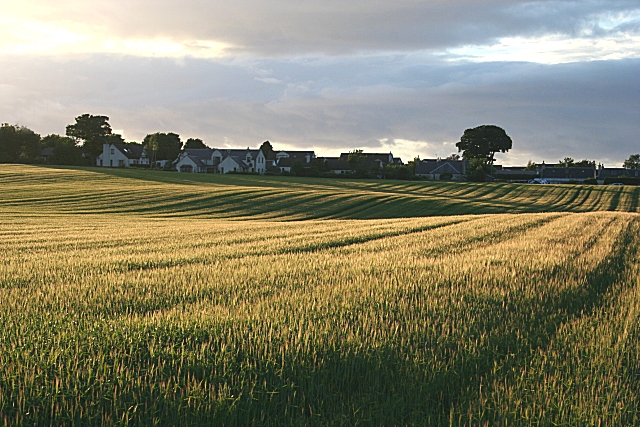Binn Hill
Hill, Mountain in Morayshire
Scotland
Binn Hill

Binn Hill, also known as Hill of Binn or Bin Hill, is a prominent hill located in Morayshire, Scotland. It rises to an elevation of 327 meters (1,073 feet) above sea level and is situated near the village of Deskford, about 5 miles east of Cullen.
Binn Hill is known for its distinctive conical shape, making it easily recognizable from the surrounding area. It is primarily composed of quartzite, a hard metamorphic rock, which gives the hill its characteristic appearance. The hill is also covered with heather and grass, adding to its natural beauty.
The hill offers breathtaking panoramic views of the surrounding countryside, including the Moray Firth and the coastal towns of Cullen and Portknockie. On clear days, it is even possible to see as far as the Cairngorms National Park to the south.
Binn Hill is a popular destination for hikers and walkers, with a well-marked path leading to the summit. The ascent can be moderately challenging, but the reward is well worth it. Once at the top, visitors can enjoy the stunning vistas and take in the peaceful and serene atmosphere.
In addition to its natural beauty, Binn Hill also holds historical significance. There are remnants of an Iron Age hillfort located on the eastern slopes, providing insights into the area's ancient past.
Overall, Binn Hill is a captivating and picturesque destination that offers a memorable experience for outdoor enthusiasts and nature lovers alike.
If you have any feedback on the listing, please let us know in the comments section below.
Binn Hill Images
Images are sourced within 2km of 57.671473/-3.1665156 or Grid Reference NJ3065. Thanks to Geograph Open Source API. All images are credited.








Binn Hill is located at Grid Ref: NJ3065 (Lat: 57.671473, Lng: -3.1665156)
Unitary Authority: Moray
Police Authority: North East
What 3 Words
///furniture.usages.renting. Near Lhanbryde, Moray
Nearby Locations
Related Wikis
Burniestrype
Burniestrype is a hamlet in Moray, Scotland.
Urquhart railway station
Urquhart railway station was a railway station serving the village of Urquhart, parish of Urquhart, Moray. The railway station was opened by the Great...
Urquhart Priory
Urquhart Priory was a Benedictine monastic community in Moray; the priory was dedicated to the Holy Trinity. It was founded by King David I of Scotland...
Urquhart, Moray
Urquhart ( UR-kərt; Scottish Gaelic: Urchard) is a small village in Moray, Scotland. It is approximately 5 miles (8 km) east of Elgin, between the villages...
Have you been to Binn Hill?
Leave your review of Binn Hill below (or comments, questions and feedback).











